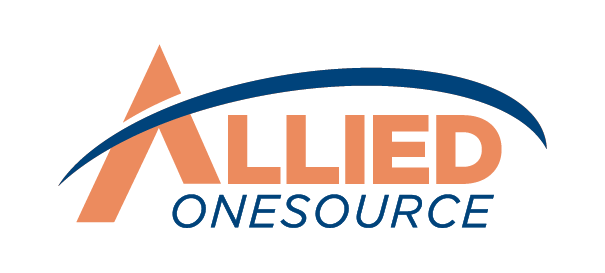Stay Ahead with These 5 Recruitment Trends in 2024 and Beyond
Today's dynamic business landscape brings about many changes for different industries. Companies compete fiercely to attract top talent as technology improves and innovations become famous.
Considering the competitive environment, how exactly can your organization stay ahead in the recruitment game? The answer lies in understanding the trends, challenges, and recruitment opportunities that might come your way.
5 Recruitment Trends in 2024 and Beyond
Staying up to date about the latest trends in recruitment isn't just an effective strategy. It's an essential practice that can help your business thrive. Understanding recruitment trends empowers employers like you to seize opportunities and address challenges when hiring proactively.
As a leader, it's important to note that each trend can become challenging to keep up with. Still, when you've successfully incorporated them into your recruitment strategies, these trends can also create golden chances for you to take advantage of.
1. Social Media Recruitment
According to the Digital 2023 Global Overview Report, around 64.4 percent of the population are internet users. Out of these 5.16 billion people, 4.76 billion or 59.4 percent of the population, are active on social media platforms.¹
Now, why does this matter? Many companies are joining the social media bandwagon to boost their brand. Beyond just ads, they're also using platforms like Facebook and Instagram to become channels for recruitment efforts - that's called social media recruitment.
It leverages online social websites to attract, engage, and hire potential employees. Whether on LinkedIn or Twitter, companies and employers create their profiles to showcase company culture and values. They also use them to post job opportunities and connect directly to talent pools.
Read More: 8 Effective Strategies for Hiring Top Talent and Finding the Perfect Fit
Challenges
Since social media recruiting is a trend, you're not the only company waving to potential hires. This means you must find a way to stand out among all other similar opportunities. Now imagine you've posted a job on LinkedIn, and applications start pouring in.
It sounds exciting, but navigating through thousands and thousands of applications from interested candidates can be a little overwhelming.
Opportunities
If done correctly, this trend can help you reach a wider audience than the usual job posts. It also allows you the chance to learn more about potential candidates based on the profiles and posts they've created on their social media pages.
By sharing top-notch content and having meaningful conversations with candidates, you're not just a company posting jobs. You become a presence, an entity in the social media world. This strong online game makes social media recruiting easy for you.
2. Skill-Based Hiring Initiatives
Another trend in recruitment is the subtle change regarding job requirements. Back then, a job ad might demand a specific degree – for example, you had to have taken a particular course or certification even to consider applying. Meanwhile, open roles today have more lenient and less specific qualifications.
This trend focuses on implementing skill-based hiring initiatives. It's all about assessing candidates for necessary skills instead of scrutinizing their written resumes. Skills take the spotlight, and it's beneficial for both candidates and employers.
Challenges
Although it's necessary to ensure that a candidate is skillful, accurately measuring skills can become subjective without the proper criteria. Moreover, recruitment managers are pressured to identify skills that align with job descriptions and responsibilities successfully. Say you're assessing how good someone is at coding. It's not as straightforward as checking off a list.
Opportunities
Implementing skill-based hiring allows companies to widen their candidate pool. Recruiters don't need to limit their search based on facts not directly connected to the job's demands. Instead, they can ensure the people they contact can fulfill the open role's responsibilities.
With a clear definition of the required skills for every role, you can utilize assessment tools and streamline your company's recruitment process.
- Customized Skill Assessments: If you're hiring a graphic designer, you might throw in a task where candidates showcase their design skills.
- Behavioral Assessments: This allows you to understand how candidates work and interact. You can use a scenario-based test to see how someone tackles real work situations.
- Simulations and Practical Tasks: Enables you to see skills in action, not just listed on a resume. Say you're hiring for an IT role; ask candidates to solve an actual coding problem relevant to the job or troubleshoot an issue.
Read More: Why Soft Skills Matter More in a Digital World
3. Remote Recruitment Practices
Even after the pandemic, many professionals are showing a preference for hybrid and remote work structures. In a survey done by Microsoft, 52 percent of around 31 thousand employees were thinking of shifting to fully remote work.² Remote recruitment is gaining traction because everyone has realized they can work in the comfort of their home.
Everything is the same except for the medium or channel used. Instead of meeting face-to-face, everything happens through screens – like Zoom or Teams. You still interview and onboard candidates, but it's all done through these digital channels.
Challenges
From the perspective of human resources and recruiters, remote recruitment can be a challenge, especially in establishing effective communication.
- Communication Hiccups: Sometimes, the connection can act up, causing delays in what you see and hear.
- Internet Issues: The video could freeze, or the audio could be cut out – not the best scenario when you're in the middle of a crucial interview.
- Culture Connection Struggles: Maintaining a strong sense of your company's culture through online means can be challenging.
Opportunities
Despite the challenges in implementing remote recruitment processes, allowing online interviews and onboarding benefits your organization. For example, you can bypass geographical barriers. This means your chances of finding top talent improve as you tap into a global talent pool.
Aside from this, migrating your recruitment process online coincides with trends at work. Specifically, it aligns with the growing demand for remote and hybrid work models. Additionally, it allows professionals to work in a flexible working environment that eventually leads to better physical and mental health.
4. DEI-Focused Initiatives
Connected with other recruiting trends mentioned in this blog, companies have shown the importance of Diversity, Equity, and Inclusion (DEI) throughout the globe.
Read More: Ethical Considerations in Staffing: Promoting Fairness and Equal Opportunities
As remote recruitment processes open doors for a diverse workforce and skill-based hiring removes many biases in candidate hiring, it's the perfect time for companies like yours to implement DEI-focused initiatives.
What does this mean for recruitment? It's about adopting strategies to build a more inclusive workforce. This involves tactics like blind recruitment, focusing on skills rather than personal details. It also means actively seeking feedback in recruitment processes that zoom in on promoting Diversity, Equity, and Inclusion.
Challenges
Here's the tricky part – pinpointing biases within your company. The real challenge lies in these biases being often unconscious, meaning they happen without you even realizing it. Research tells us that our brains automatically trigger these biases.³
People might not be aware they're making judgments during the recruitment process, making it more challenging for human resources to spot and address these biases when crafting DEI initiatives.
Opportunities
Although achieving DE&I takes a lot of effort, it can contribute to more than just workplace dynamics. Aside from creating a more welcoming environment for every professional, it is also a great recruitment marketing strategy.
Based on a LinkedIn survey, 80 percent of professionals said they want to work for companies that value DEI.⁴ By riding this DEI wave; you're not just following a trend but essentially leading your company toward success.
5. AI-Driven Recruitment Tools
Among all talent acquisition trends, the most widespread is using artificial intelligence to automate, optimize, and streamline recruitment efforts.
These tech-powered tools use machine learning to finish different tasks throughout the hiring process. Thanks to predictive analytics, they can quickly analyze resumes, identify qualified candidates, and even anticipate someone's success.
Challenges
Among all of the challenges new tech tools present, one of the most notable issues with this trend is related to DE&I.
Since AI learns from historical data patterns, and here's the catch – it might unintentionally reinforce biases, leading to discrimination. AI adoption can also struggle to identify candidates that are culturally fit for your company.
Opportunities
Even with its challenges, AI recruitment software and tools are continuously improving. This means issues can still be resolved through innovation.
In the meantime, they can already deliver benefits during your talent acquisition process. For example, using these tools can significantly reduce your time-to-hire. It could automate repetitive tasks. Moreover, they can make your company more responsive, improving the overall candidate experience.
STAY AHEAD IN THE TALENT GAME WITH ALLIED ONESOURCE
At Allied OneSource, we remain adaptable to changes in trends and technological innovations. Being in the staffing industry since 1898, we've mastered the art of embracing change and using it to our client's advantage.
It is our mission to connect employers like you to outstanding professionals. Together, we can propel your business toward the forefront of success. Establish an edge over your competition by reaching out to us today!
References
1 Kemp, Simon . "DIGITAL 2023: GLOBAL OVERVIEW REPORT." DATAREPORTAL, 26 Jan. 2023, datareportal.com/reports/digital-2023-global-overview-report
2 Smith, Morgan. "Twitter, Reddit and 8 Other Companies Offering Permanent Remote or Hybrid Work—And Hiring Right Now." CNBC, 13 Apr. 2022, www.cnbc.com/2022/04/13/10-companies-that-switched-to-permanent-hybrid-or-remote-work-and-hiring-right-now.html.
3 "Unconscious Bias." Imperial College London, Dec. 2023, www.imperial.ac.uk/equality/resources/unconscious-bias/.
4"Why Is Diversity and Inclusion Important?" Learning LinkedIn, Dec. 2023, learning.linkedin.com/resources/learning-culture/diversity-workplace-statistics-dei-importance.











